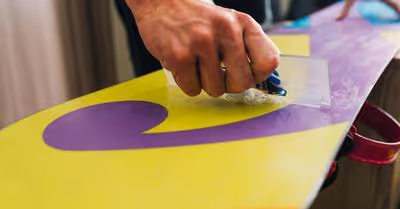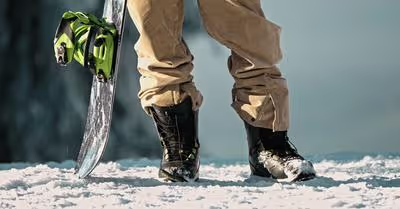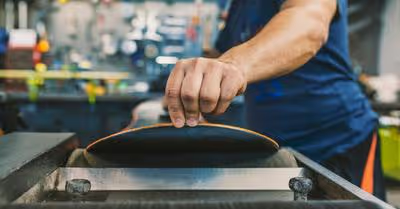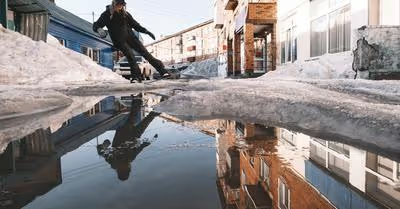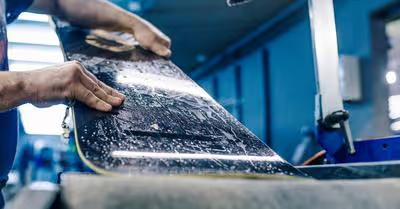Table of Contents
What Do Snowboard Boots Weigh?
Snowboard boots are designed to protect your feet and give you an optimal grip on the snow. They may be lightweight, but they are designed to keep your feet warm and dry.
They come in many different types, but most of them are made of leather. Some can even be made of rubber or nylon materials. You need to know which type is best for your needs because they vary by material, design, size, and weight.
Snowboard boots between 1-3 pounds depending on the size, snowboard boot type, and design. They are known to weigh less than ski boots and the average snowboard boot is about 2.5 pounds.
Understanding The Design Of Snowboard Boots
A snowboard boot is an important piece of gear that helps the rider with traction on the icy slopes. A key factor in deciding which boot to buy is how well it performs. The design of a snowboard boot is crucial to its performance and quality.
The general design of a boot is the same and it consists of five key components. Most snowboard boots weigh between 1-3 pounds, so the design does not impact the weight too much.
However, to understand more about snowboard boots and the added weight on your feet you need to learn more about the design of snowboard boots and the different components included in each design.
Support Area
The support area of the snowboard boot is where the stiffness and flex are to determine the shape and style. However, you need to consider what the best type of support area flex would fit you based on the maximum weight you want from a snowboard boot.
On average, the support area will make up almost half of the weight of the boot because it tends to use a lot of material to create a firm section at the back of the boot. This helps keep your foot in place, so
Lacing System
If you prefer a lighter boot, we recommend a Boa lacing 1 dial system. This gives you quick access to put your boots on and off while also giving you plenty of fastening capabilities to make them fit comfortably.
This is also one of the most popular lacing systems on lighter boots, as you look at heavier and more bulky style boots you may see a 2 dial Boa system instead. The lacing system does not add much weight to the boot, but it impacts the tightness.
Footbed
The footbed is another EVA molded foam part located on the bottom of the snowboard boot for comfort. This piece accounts for about one-quarter of the total weight of each boot, and it can be slightly higher depending on the type of footbed used.
Liner
The liner is located on the inside of the boot and it will be relatively light without adding a ton of weight to the boot. The liner is made from compact foam, acting as a lightweight addition to your snowboard boot.
It is added to improve comfort, this is why it is best to find a dual-density foam liner with a soft flex as the lightweight option. This combination typically adds minimal weight to your boat so you can still maintain faster speeds on your board.
Outsole
The outsole is another important aspect of a snowboard boot that accounts for approximately one-quarter of the total weight of each boot. The soles you want to use are molded EVA to be more lightweight.
This sole design is perfect for someone looking for a lighter snowboard boot. It will keep your feet lighter to allow you to stay faster on your board.
Types Of Snowboard Boots
Snowboard boots are the most important gear when it comes to your snowboarding. It’s because they will provide you with the support and protection needed during your upcoming session.
There are four major types of snowboard boots that you can consider buying based on the different weight designs they have. It is the primary factor along with the flex to determine what suits you best as a snowboarder.
Freestyle Boots
Freestyle snowboard boots are a bit similar to beginner boots but they are lighter and weigh less than a beginner boot. They also have a soft flex profile, so you can use these boots to stay light on your board and pick up faster speeds.
These boots are designed with solid support that may be appropriate for riders that are new to the sport, but they lack the flexibility that other experienced riders may need from less bulky boots.
Beginner Boots
Beginner snowboard boots have a soft flex and are comfortable to provide an excellent fit for beginners. They are not too stiff and they are extremely easy to break in only after a few rides.
However, these boots are known to be a bit heavier and clunky in design. This is because the heavier composition makes it easier for beginner riders to maintain balance and stability on their snowboard.
All-Mountain Boots
All-mountain boots are a solid selection for all riders, but because they tend to be lighter with a little less support on sharper turns they are more preferred by advanced riders. This lightweight design helps with better flexibility too.
The medium flex gives these boots a nice balance between being able to carve turns quickly and also having enough stability to take on steep pitches without losing control. This boot has the perfect weight to ride much more aggressively too for those experienced snowboarders.
Freeride Boots
Freeride snowboard boots are designed to offer more than just traction and flexibility. They are the lightest boots you will find and are the go-to option for riders who want to be able to go up and down with less effort and more flare.
These boots also provide an exceptional amount of protection from fall damage with their ankle collars. The average flex is either a medium or stiff flex, and with the lightweight composition, they have excellent responsiveness too.
These boots are used by people who feel more confident when they're on the board. They're also often used by those who travel between slopes because they provide the best performance regardless of whether you're traveling uphill or downhill.
How To Choose Your Snowboard Boots
Before picking your snowboard boots, you should consider what weight will suit your riding needs best. Remember, a lighter boot will help with speed and turning so if your experience level is more advanced this fits you best.
Fit
When choosing a snowboard boot, it is important to make sure that you are getting the best fit from your boots. A factor that impacts your fit is how much each boot weighs because it can be a hassle to lug around a heavy snowboard boot.
One way to test if a boot’s fit is right for you is by walking around to see how your foot feels in them. You should have no issues with how heavy they feel on your feet, or else this is an indicator you need to go lighter.
Weight
Snowboard boots are designed to protect the foot from the weight of the snowboard while giving the rider maximum control. They are also designed to reduce injury risks.
If you are an advanced rider, you might want to consider a lighter snowboard boot. This is because these types of boots offer more speed for better performance.
Lighter boots are generally better for advanced riders who want speed, but heavier boots are perfect for beginners because they provide more traction and stability.
Flex
The flex of a snowboard boot matters a lot because it determines how much it can handle turning and the total weight it provides. While the flex itself does not determine how much a boot will weigh, you will find much success with a soft to medium flex.
The good thing about snowboard boot flex is how much it can vary depending on the boot weight. This allows you to mix and match features and try a heavy boot or a light boot with different flex options.
Type of Lacing
When you are choosing a type of lacing for your snowboard boots, the Boa 1 pull system is the most popular option on lightweight snowboard boots. It helps you take the boot on and off faster too.
Type of Liners
You should only look for a boot that has a removable liner that is very thin and easy to move. They should not be clunky or heavy, and this should be the lightest part of your boot.
It acts as cushioning inside the boot, so you want to avoid any boots that add extra interior weight to a snowboard boot with an unnecessarily thick liner because this would defeat the purpose of what you want to accomplish on your snowboard.
Does The Weight Of Snowboard Boots Matter?
The weight of snowboard boots is a minor factor that could impact the way you snowboard because lighter boards can go faster. If your boots are lighter, this makes your board lighter and gives you a bit more speed and versatility.
However, it is an incremental change and weight and should not be considered a top factor to change your performance level. The most important thing to consider with snowboard boots is your comfort level and size.
Both of these factors could be slightly impacted by how much your boots weigh, and this is why we tend to prefer boots as light as we can find. They are easier to walk in and they are more comfortable to wear all day.
Recent Articles



